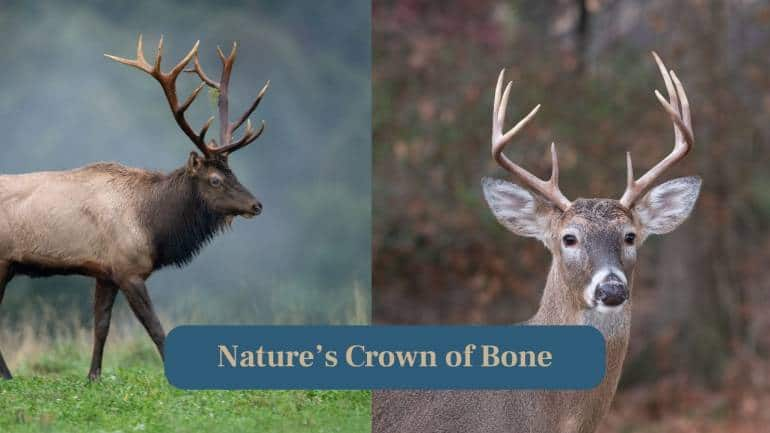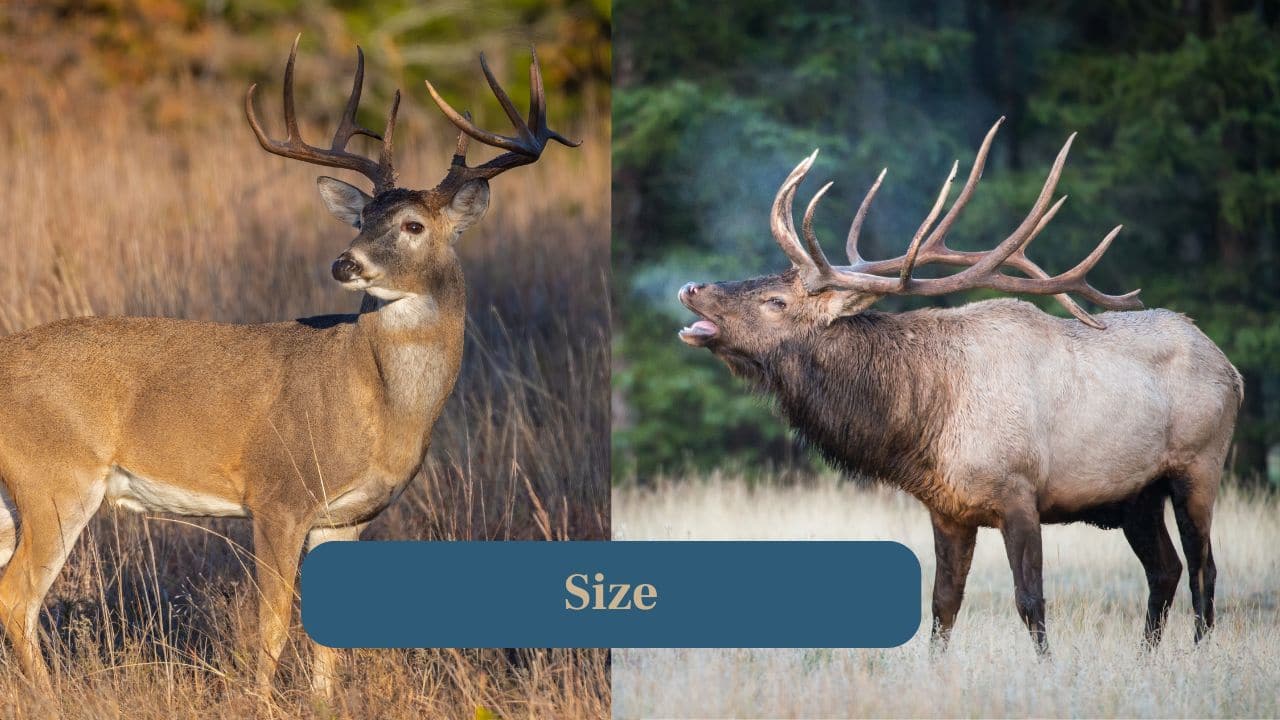Trending Topics:
- Blood Moon 2025
- Potoo Bird
- Cosmic Butterfly in Space
- Jupiter Juno
Elk Antlers vs. White-Tailed Deer- Spot the Difference
Learn how to identify elk and white-tailed deer by their antlers, size, shape and seasonal growth patterns in the wild.
1/10

1. Nature's Crown of Bone: Antlers are living bone structures that regrow every year, giving elk and deer their magnificent, ever-changing crowns of power. (Image: Canva)
2/10

2. Size: Because elk are larger animals, their antlers appear broader and sweeping, while white-tailed deer antlers stay compact and elegant. (Image: Canva)
3/10

3. Life Stages: Elk calves and white-tailed deer fawns grow into adults with full antlers, which shed in old age. (Image: Canva)
4/10

4. The Shape of the beam: White-tailed deer antlers have a single curved main beam with tines branching outward like fingers from an open hand. (Image: Canva)
5/10

5. Elk's Majestic Arches: Elk antlers sweep upward and backward, forming a bold, arching pattern that gives bulls their iconic, towering silhouettes. (Image: Canva)
6/10

6. Texture and Colour: Deer antlers are smooth and lighter brown. The elk antlers look rougher and darker due to thicker growth and weather exposure. (Image: Canva)
7/10

7. Antler Shedding Season: Both species shed antlers yearly. The white-tailed deer shed their antler in late winter whereas elks shed their antlers slightly later. They leave clues for observant forest wanderers. (Image: Canva)
8/10

8. Counting the points: Mature elk often show six points per antler, whereas white-tailed deer usually have fewer, shorter tines branching from the beam. (Image: Canva)
9/10

9. Mating Displays: Elk use large antlers for showy sparring and display, while white-tailed deer lock antlers quietly, testing strength through pushing. (Image: Canva)
10/10

10. Habitat Influence: Elk antlers grow wider and longer in open meadows, while deer antlers remain narrower in dense forests for easier movement. (Image: Canva)
Discover the latest Business News, Budget 2025 News, Sensex, and Nifty updates. Obtain Personal Finance insights, tax queries, and expert opinions on Moneycontrol or download the Moneycontrol App to stay updated!






